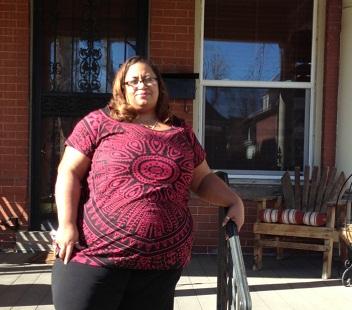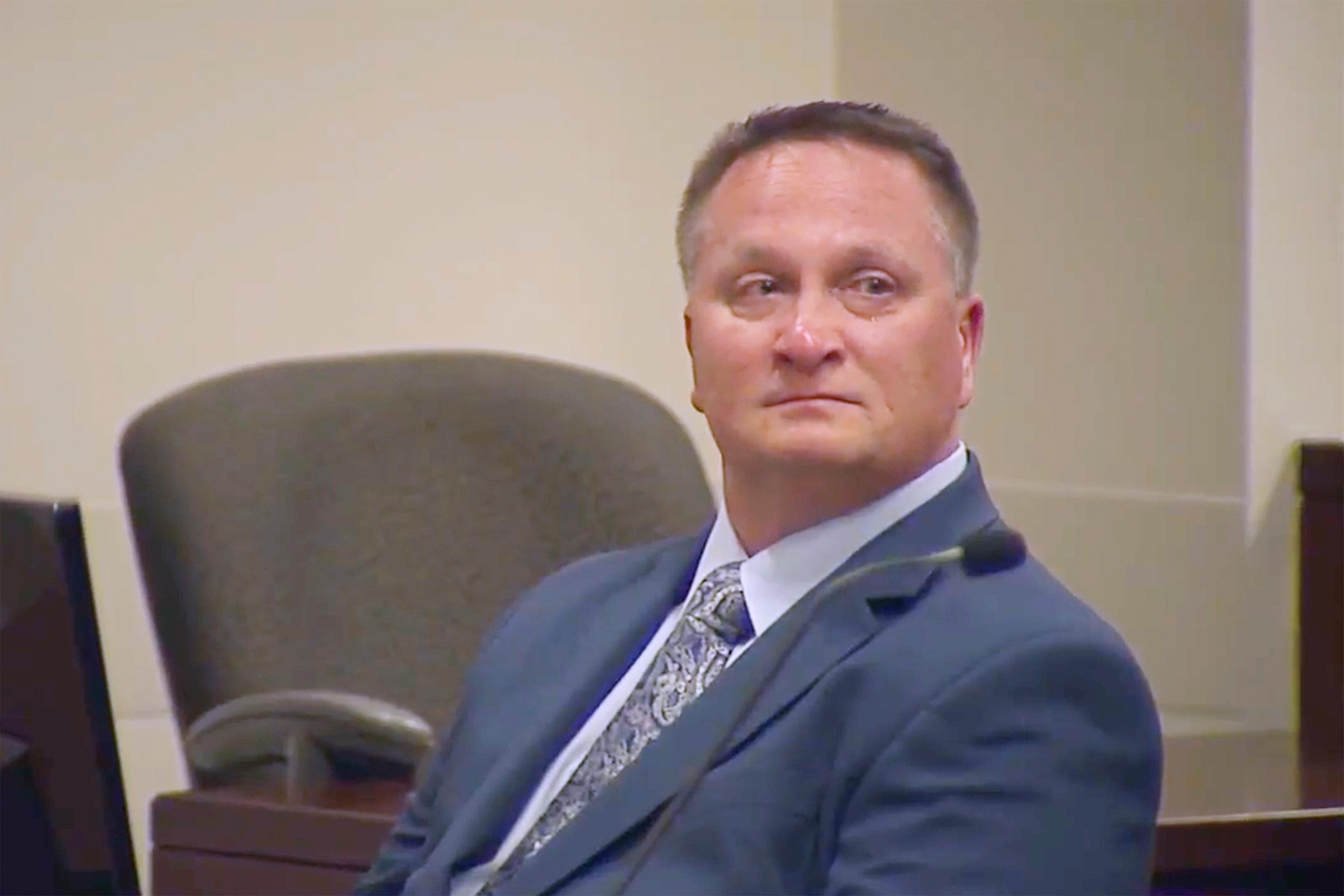
[Photo: LaDawn Sullivan]
Join the conversation on "Losing Ground." Share your life experiences and insight on racial disparities with our newsroom through the Public Insight Network.
Click here for other stories in our Losing Ground series.
In our series “Losing Ground,” we’ve talked about how minorities in Colorado are increasingly lagging behind whites in education and income. There's also a growing gap in homeownership, according to our investigative partners I-News, who analyzed census data. CPR's Andrea Dukakis has a story about a black family in Denver and its tradition of homeownership. Then, we speak with Rolf Pendall, a housing expert at the Urban Institute in Washington, D.C.
Here is a transcript of Andrea Dukakis' report:
Reporter Andrea Dukakis: If you grew up in LaDawn Sullivan’s family, it was made clear to you at a very early age. That owning a home was really important. Her grandmother owned a home. It had a nice backyard with a big back porch.
LaDawn Sullivan: And then her kitchen which was my all-time favorite had a double oven, still kinda old school, with kind of huge floral wallpaper...not very attractive--these days I guess.
Reporter: Sullivan’s parents also bought a house. And when Sullivan got married, and was ready to settle down, her grandmother had a gift. Sullivan: So her gift to us after my son was born, was the downpayment for a home. Reporter: If she had given you the down payment on the house and you said, no I want to spend it on something else. What would her reaction have been? Sullivan: Give me my check back. Reporter: Really? Sullivan: I’m pretty sure she would have said forget it. I’ll just keep the money until you’re ready. Reporter: Even today, 18 years later, she knows the exact price. Sullivan: 68,642 dollars. LAUGH Reporter: Sullivan says investing in a house is different than a bank account. It’s a way to force people to save. And pass on something to the next generation. Sullivan: It’s a lot easier to go to the bank with your ATM card and just take money out to do things that you want to do. A lot harder if you think about signing your name on a paper that would dip into the equity of your home because then you recognize you’re literally giving up something you’ve invested in. Reporter: Sullivan credits her grandmother--Ruth Denny-- with helping ensure the family’s financial security. But she’s even prouder of her grandmother’s other accomplishments. Ruth Denny was known as a central figure in Denver’s civil rights movement. Around that time blacks and latinos began catching up to whites when it came to owning homes, but then those gains began melting away. Today, both groups are worse off compared to whites than they were during the 1970’s. Back then, Colorado had one of the narrowest gaps in homeownership compared to whites. Now it has one of the widest. Sullivan says her neighborhood has changed a lot over time. Sullivan: When I moved here, my block was 99 percent African American. I think there was one caucasian family that lived on our block. And over this 18 year period, we’ve seen it completely reverse and so now the majority of what was once Denver’s black community has turned into a majority white community. Reporter: There are a lot of reasons neighborhoods change. But the statistics are clear blacks--and Latinos--aren’t keeping pace with whites in terms of owning homes. The reasons are complicated. The income gap has grown. The sub-prime mortgage crisis hit African Americans especially hard. Whatever the combination of causes. It’s going to be harder for these groups to pass on wealth. And that makes it tough for the next generation. Sullivan: There’s a difference in education levels which means there’s a difference in job levels, pay levels. And then if you already started a few steps back. then there’s a less likely chance that you’ll ever catch up. Reporter: Sullivan’s grandmother died recently. After all those years of mortgage checks, her grandmother’s house is paid off. The house is still in the family. She left it her kids when she died. Today, though, owning a home is out of reach for many. Here to talk about that, as part our series, “Losing Ground” is Rolf Pendall, a housing expert at the Urban Institute in Washington, DC. Rolf, thanks for being here. Rolf Pendall:It’s a pleasure. Reporter:Let’s just talk generally first. Talk about the benefits of owning a home. Pendall:I think they start with the security that you get when you don’t have to move as often. Renters have to move as their rent goes up. Their landlords can raise their rent and ask them to leave. Another benefit is that it’s, at least a forced savings account for people. In the right circumstances, it can also be a savings account that earns you money. That is, it’s a wealth-building instrument. Reporter:Our study looked at numbers dating back to the 1960’s. It showed a growing gap between whites and blacks and whites and Latinos when it comes to owning homes. But you’ve looked at more recent data on the housing gap. Let’s talk, first, about black families compared to white families. What’s happened over the years? Pendall:So between 1960 and 1980, black families began to close the gap with white families. Their homeownership rate rose from about 38% in 1960 to over 44% in 1980, and that was because of continuing income gains for the African-American households and also opening up of housing law, the removal of discriminatory barriers in housing. Reporter:And what’s happened since 1980? Pendall:Since 1980, the economy has been much less favorable for African-Americans, for the most part. There was a period, one decade, the 1990’s, when homeownership actually rose for African-Americans. And that coincides with both changes in mortgage rules and a better economy, which helped lift homeownership rates, especially for middle-aged African-American households. Reporter:But then you have this tough economy in the early 2000’s and the more recent housing crisis, which took a lot of those gains away. Pendall:That’s right. The terms of mortgages didn’t just help African-Americans becomes homeowners, they allowed, and often even encouraged, African-Americans homeowners to treat their houses as an asset and borrow against their houses so that they could fulfill other needs. So in the early 2000’s when the economy turned sour, African-American households really needed to rely on their own and their family members’ house values to stay afloat. So doing things like getting medical care, education, transportation – all of these things became much more feasible because the housing values could now be taken and turned into home equity loans. And many African-American families took advantage of those loans, often to an extent that they couldn’t afford. Reporter:And all of this sort of accounts for these up and downs in the African-American community. While there have been peaks, when you look at this large timeframe between 1960 and today, the gap between blacks and whites and homeownership has grown since that time. Pendall:That’s right. Yeah, the gap between blacks and whites now is larger than it has been in any census year since 1960. It’s almost 28 percentage points. Reporter:When you talk about what happened to blacks, sort of these easy loans that got a lot of folks into trouble, how did those same factors affect whites? Pendall:White borrowers didn’t have to depend to that extent on their house values to stay afloat in the bad economy. On average, white households have asset bases well above $50,000 per household compared to just about $4,000 or $5,000 per household for blacks. So they had much more of a cushion, and they could use that cushion to avoid foreclosure. Often also, white non-Hispanic families weren’t getting into loans, weren’t sold loans, weren’t peddled loans and weren’t pushed to loans that would get them into such trouble as was the case with African-American borrowers and, to an extent, Latino borrowers, too. So the foreclosure rates and the delinquency rates among whites were, and have been, less than fair for blacks. Reporter:And let’s look at Latino families. When you look back to the Civil Rights Movement, Latino families have lost ground compared to whites. But, it’s much more complicated when you look more closely. Pendall:That’s right. The biggest event, really, in the last 30- or 40-years, looking at Latino demographics, came, really, in the 1980’s. The Immigration Reform and Control Act of 1986 affected the composition of the Latino population. It introduced a large number of new migrants from Mexico and Central America to the United States. And when these people came in, they were mostly young, they mostly didn’t speak English very well, and they were mostly pretty footloose. So that meant that they were renters, and they were getting a foothold in the economy. Reporter:And that skewed the numbers a bit, is what you’re saying. Pendall:Yeah, that actually brought the Latino homeownership down from about 43% to 42%. So even then, not all that much between 1980 and 1990. But between 1990 and now, we’ve seen a different story than, really, either whites or African-Americans. And that’s a story of decade-over-decade increases in homeownership for the Latino families. Reporter:And what accounts for that? Pendall:It’s largely the incorporation of the Latino population and their aging in American society. Reporter:So now we’ll look to the future. What do you see when it comes to housing and blacks and Latinos? Pendall:So starting with whites, the big story – Well, there are two big stories. One is, the baby boomers are aging, and they will pass away, and they’ll hand their houses down to new generations. That’s likely to mean not much growth and, perhaps, some decline in homeownership among white households over the next 10- to, perhaps, 20-years. Among Latinos, you still have the process of incorporation going on and gains from generation to generation. So it’s likely that Latino homeownership will, in fact, continue to rise. And finally, among the African-American population in the United States, the black population has a weaker base now on which to build future homeownership than it did 30 years ago because of declines in homeownership among young and middle-aged black families. Reporter:Rolf, thanks so much for being here. Pendall:It’s my pleasure. Host Ryan Warner:Rolf Pendall of the Urban Institute, talked about housing trends with CPR’s Andrea Dukakis. This is part of our series, “Losing Ground,” about the growing gap between whites and blacks and whites and Latinos when it comes to things like education, income and housing. Our series continues tomorrow. We’ve been asking about your experiences with racial disparities in Colorado through our Public Insight Network, and we’re gonna hear some of what you have to say.
Join the conversation on "Losing Ground." Share your life experiences and insight on racial disparities with our newsroom through the Public Insight Network.
Click here for other stories in our Losing Ground series.









